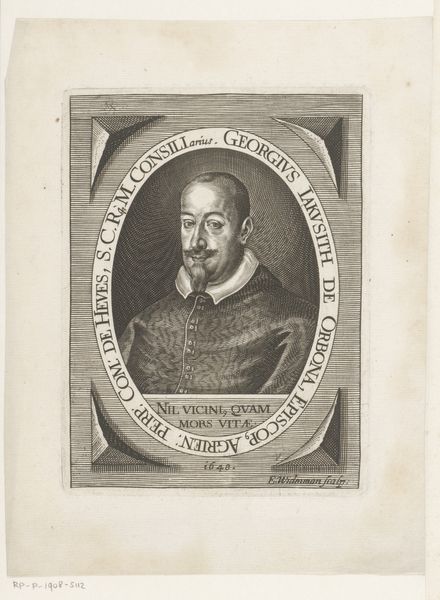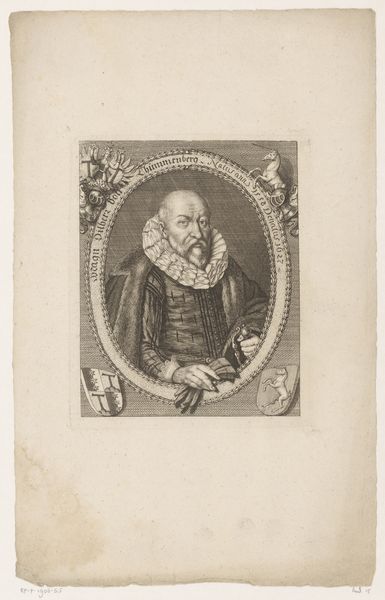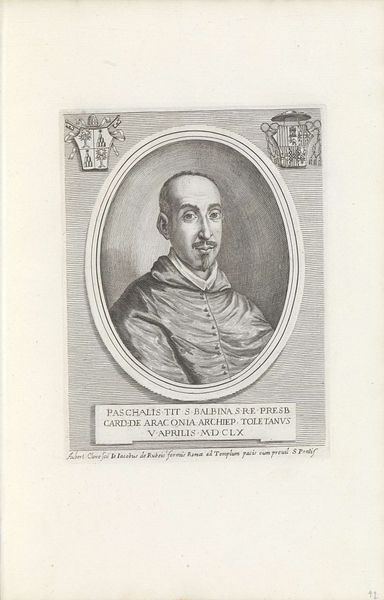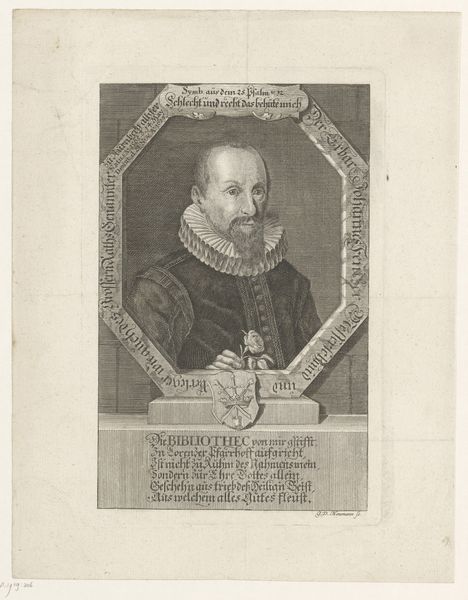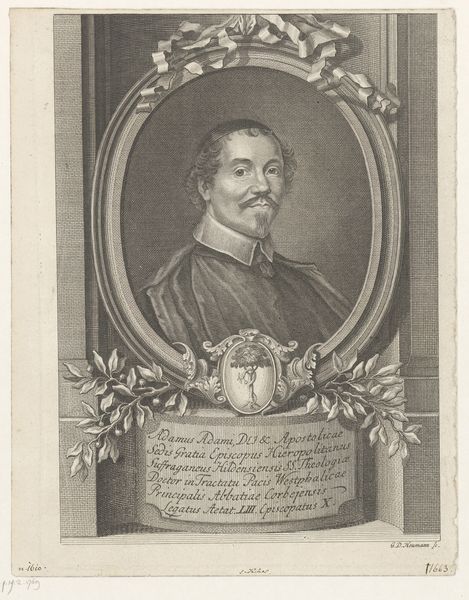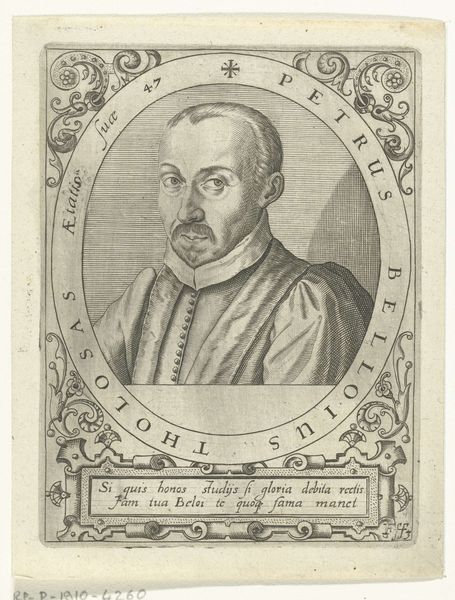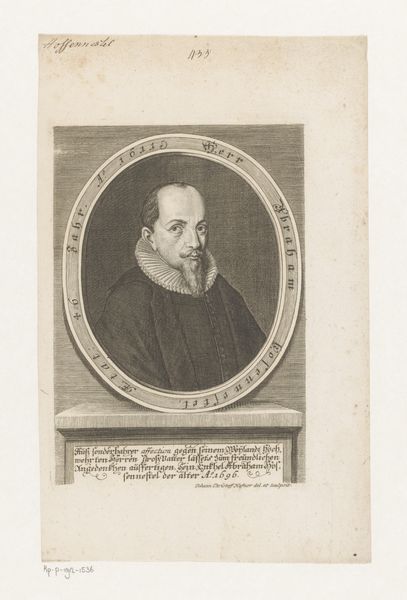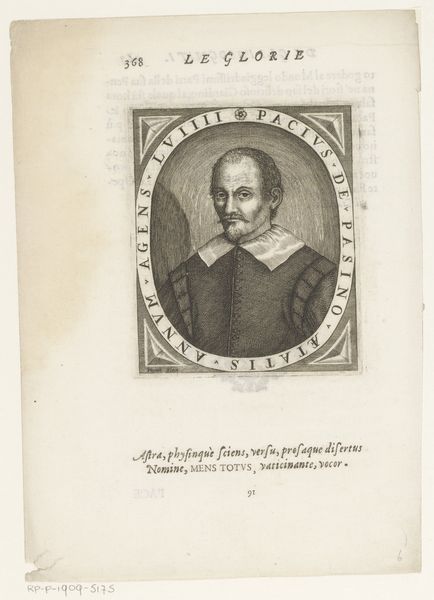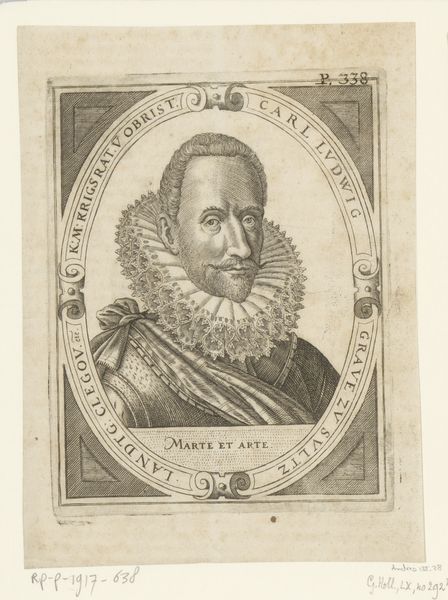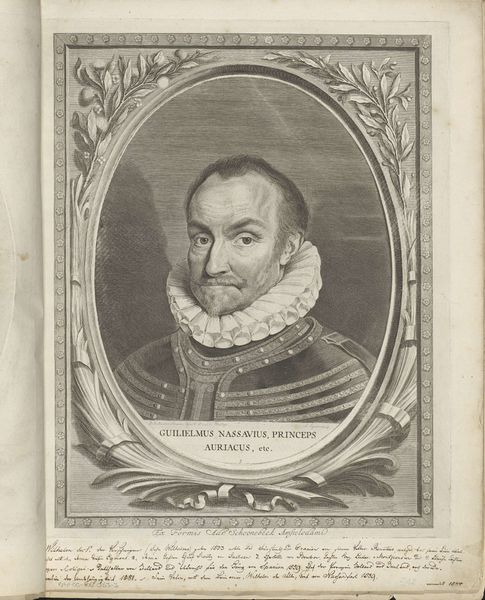
print, engraving
#
portrait
#
baroque
# print
#
old engraving style
#
history-painting
#
italian-renaissance
#
engraving
Dimensions: height 196 mm, width 145 mm
Copyright: Rijks Museum: Open Domain
Curator: Looking at this portrait, one feels the weight of history etched in the fine lines of the engraving. Editor: Indeed. It has an immediate, solemn gravitas. The limited palette emphasizes texture, creating a palpable sense of formality. Let's dive into what we're seeing. This is "Portret van paus Alexander VIII," or "Portrait of Pope Alexander VIII", created between 1658 and 1679 by Giuseppe Maria Testana. The medium is engraving. Curator: Testana captures Alexander VIII, born Pietro Vito Ottoboni, within the quintessential oval frame that recalls Renaissance and Baroque portraiture. To me, it reads as the circle of authority, knowledge, almost like a protective halo. Note how the gaze holds an unsettling composure. What cultural associations resonate for you here? Editor: What jumps out are the papal emblems flanking the portrait. They speak to power, legacy, divine right... and very earthly administration. Considering this work resides within a larger historical context, the image promotes Alexander's lineage and asserts the continued power of the Catholic Church. What’s most revealing, perhaps, is its production date — hinting at propaganda circulating as powerful families vied for control of Rome. Curator: Propaganda or hagiography, perhaps a little of both? Symbols reinforce power; observe how meticulously each strand of hair, the folds of fabric are rendered, elevating him beyond mere mortal. The engraver isn’t simply depicting likeness but crafting a carefully curated image designed to evoke reverence and obedience. Editor: True. But looking at that lace collar, I can't help but also see vanity woven in! A sort of 'look at my piety *and* my exquisite taste.' It brings an oddly human element. Curator: An earthly counterpoint, anchoring the celestial in our corporeal understanding, no? A clever blending of earthly and godly authority, indeed. It’s compelling to trace those human nuances in symbols. Editor: Art like this reminds me of how crucial art was in shaping perceptions of leadership and the papacy's enduring hold on culture. It's fascinating to peel back those layers. Curator: Absolutely. In studying symbolic works such as this, we are able to observe a powerful dialectic between earthly needs and aspirational beliefs that remain in collective memory.
Comments
No comments
Be the first to comment and join the conversation on the ultimate creative platform.
